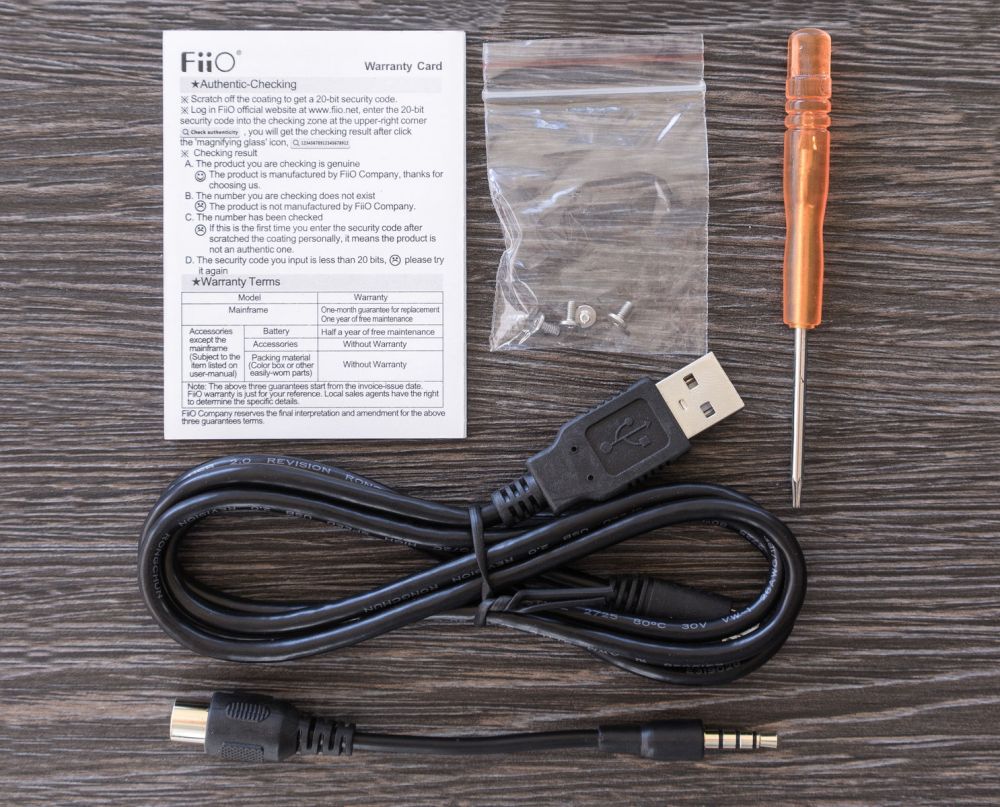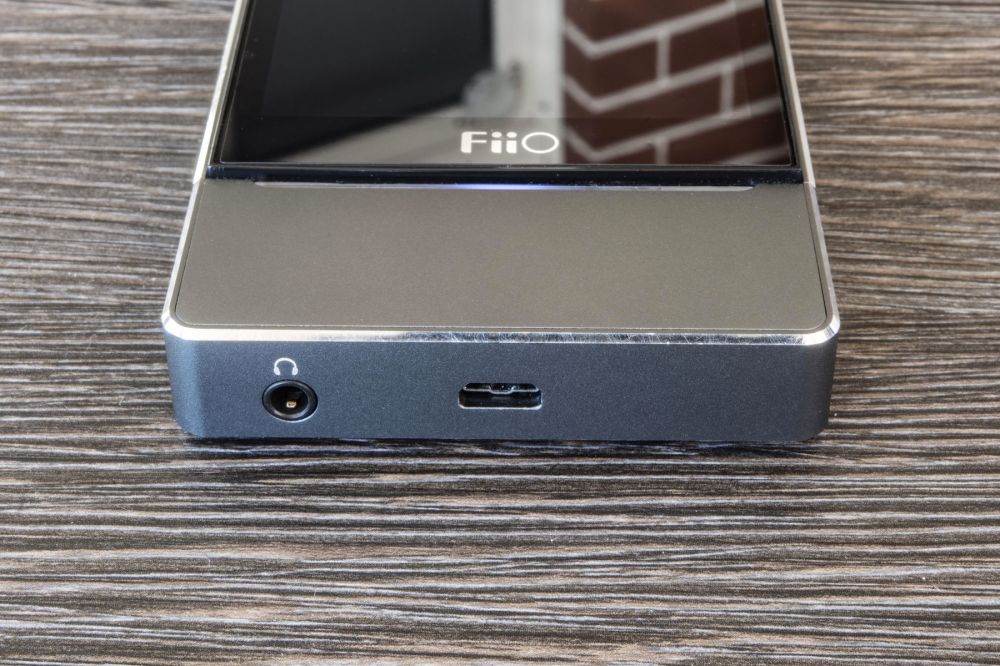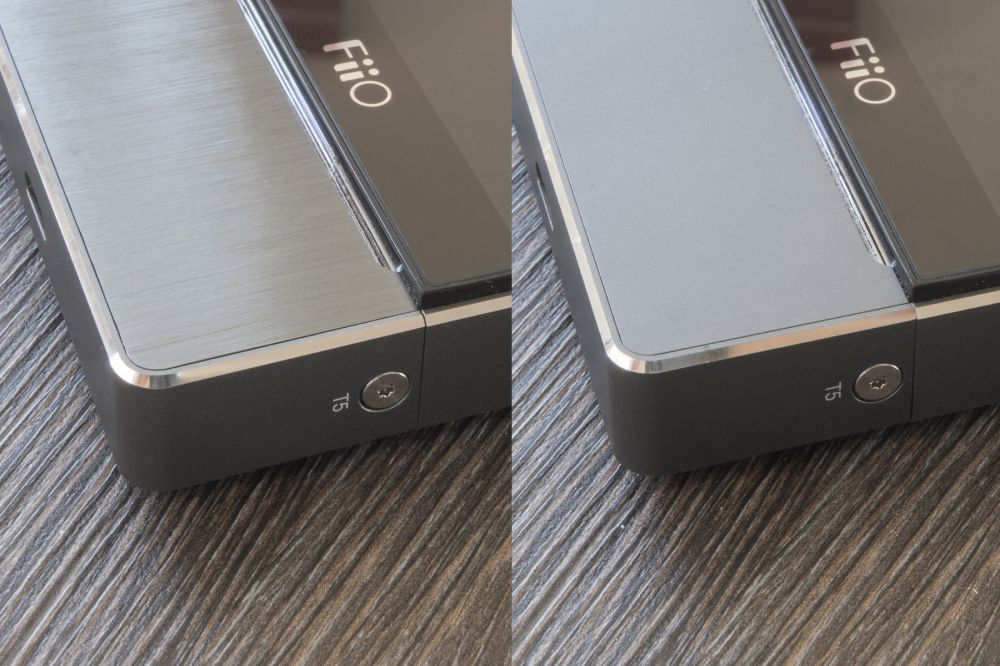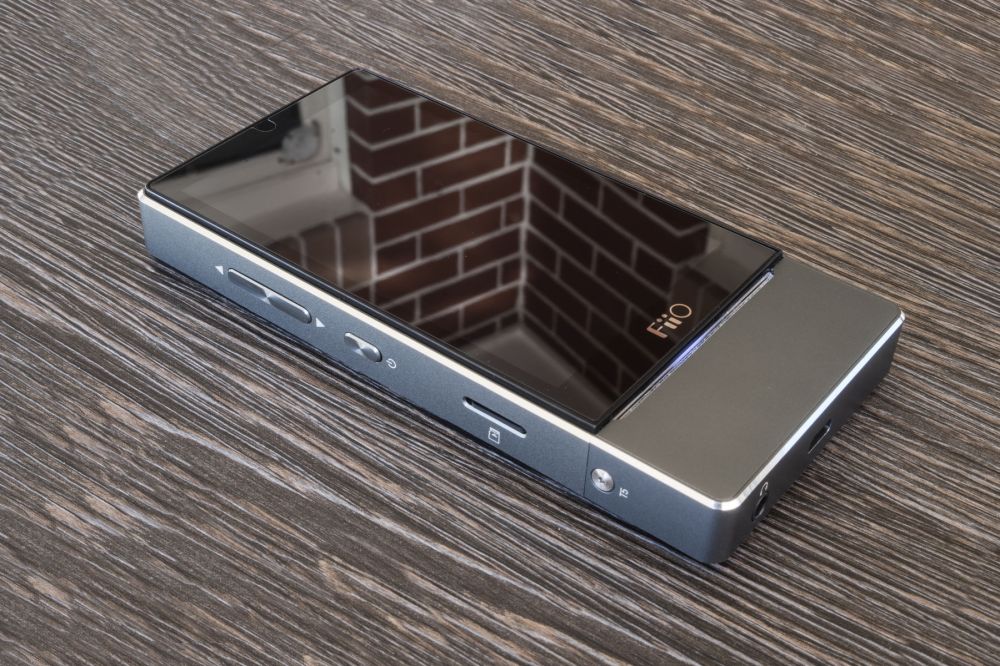Introduction –
In the wake of the X7 II and with recent attention being focussed mainly towards Fiio’s new X5 III, it seems that the device that started it all has lost its spotlight. But Fiio’s X7 remains their present flagship for good reason, and though it was Fiio’s first attempt at a smart, Android-based music player, the X7 is no less mature in its execution than the X5 III. With the addition of a modular amplifier unit, offering different output powers and altered flavours of sound, the X7 is versatile and featured. And though the X7 is older, being a flagship device, it was designed to the highest standard, whereas the midrange X5 III was designed with the intention of being compromised. Let’s see if the X7 still represents the value and prestige it held at launch and whether it remains a smart purchase in 2017.
Disclaimer –
I would like to thank Ari very much for his quick communication and for providing me with the X7 on extended loan. There is no monetary incentive for a positive review and despite receiving the player free of cost, I will attempt to be as objective in my evaluation as possible.
About Me, Background, Gear of choice, Preferences and Biases –
I generally prefer a u-shaped sound that is close to neutral. I like a lot of detail and clarity but can appreciate a smooth, laid back sound. I’m not particularly treble sensitive so I may be more forgiving of brightness over darkness. I will note if I use a different eartip/pad/cover during the review and describe the sound changes.
Read More
Accessories –
The X7 is similarly packaged to the X5 III with renders and specs adorning the outer surfaces of the box. A hard box slides out from the pictured exterior containing the X7 within foam. The device comes with a plastic screen protector pre-installed, unfortunately not a tempered glass one like the X5 III. The player also comes clad within a plastic case that should protect from scratches and small drops.
Fiio also include a micro-usb cable, extra screws for the amp modules, a matching T5 screwdriver, extra screen protectors, several skins and a 3.5mm to coax cable. Basic instruction and warranty papers are located just below.
Amp modules come within a smaller package, they are well protected within a nice metal tin with a snug foam inlet. Fiio packages each module with a plethora of vinyl skins to personalise the module and match the main unit should you want to add some texture and scratch protection to your X7.
It’s a nice selection of accessories all up. We can clearly see some progression with the X5 III through the inclusion of a glass screen protector and an additional faux leather case though the X7 comes very well equipped for most uses.
Design –
The X7 was the first Fiio device that really stepped up build quality from impressive to thoroughly premium. It shares the same uni-body aluminium design as the X5 III though due to an absence of glass back, the X7 has a small plastic window at the rear to allow wireless transmission. And perhaps most notably, the X7 is a modular player allowing users to swap amplifier modules to achieve lower noise levels with sensitive iems and higher driving power with high impedance headphones. While it may seem redundant, the modular amplifiers allow for greater flexibility that regular gain controls can achieve.

The X7 has an almost completely metal build that is just as solid as the X5 III though I personally prefer the aluminium back to the glass back of the new X5 due to its greater in hand feel and drop resistance. The main chassis is perfectly solid without flex or give in any direction, it also feels a little softer in the hand than the more straight edged X5 III. The X7 is a chunky device, measuring in at 130 mm× 64 mm× 16.6 mm and 220g making it a bit thicker and heavier than the X5 III and very substantial coming from a modern smartphone. However, to my eye, the X7 is a more attractive device than the X5 III with more slender and elegant dimensions that conform appreciably better to my hands. It’s not a device that goes unnoticed in the pocket nor would the X7 be remotely viable as a workout DAP, but it does avoid being overly cumbersome during commute.
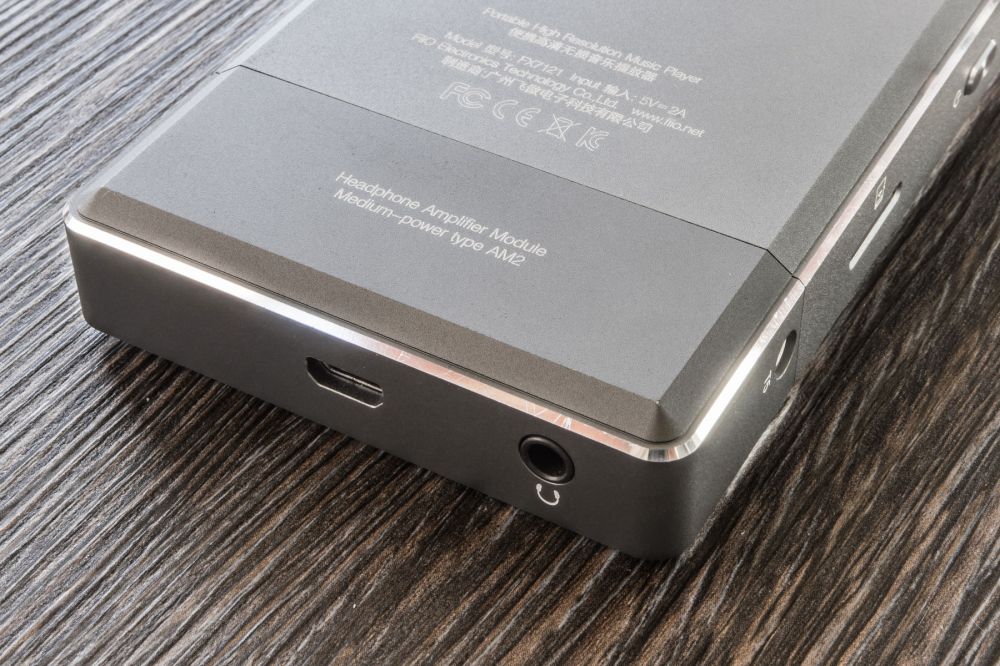
Some bold chamfering runs the perimeter of the device adding some visual interest. The buttons are also metal, keeping the premium feel uniform and each is clicky with nice travel and feedback. Though they are a tad shallow, different machining on the buttons gives them an easily distinguishable texture when the device is in your pocket. The buttons are also very well placed and the X7 controls much more like a smartphone, I also didn’t experience any accidental presses like the X5 III.

At the front of the device lies the same 4” 800 x 480 display as the X5 III. I feel my particular X7 was more accurate with more pleasing colours though I have also seen X7’s that looked more off than the X5 III so I would put this up to unit variation rather than calibration from factory. Brightness is similar, minimum brightness is a little bright for night use and max brightness is fine except when under direct sunlight where the screen tends to wash out. Viewing angles and contrast are also quite good as is saturation which works a treat for album art and video. The X7 doesn’t have the highest Dpi compared to today’s premium smartphones, but text looks crisp and UI elements are well scaled. There is plenty of resolution to view album arts and small text, even the occasional video and game look great on the X7’s IPS display. While the Hidizs AP200 utilises a higher resolution 960×540 display, the hardware utilised in these players isn’t quite powerful enough to push those pixels and the slightly lower resolution X5 III and X7 both provide a significantly more fluid performance.

And finally, running over the physical features of the device, the right and left sides are symmetrical with a rocker at the top and single button below. The rockers can be used to skip songs and change volume while the buttons cover play/pause and power functions. Being symmetrical, Fiio provides a software option to swap the orientation for left-handed users.
The left side houses the single micro sd card slot, it isn’t covered like the slot on the X5 III but allows for tool-less swapping of cards. The card also lies perfectly flush with the side of the device to prevent damage and accidental removal.
The top of the X7 is mainly featureless save for a line/coax output for use with an external amplifier. The bottom of the device is most notable, housing the main interfaces and amp modules. The modules themselves are quite small, they slot nicely into the device and attach using a wide connector that looks to be quite hardy and reliable, I didn’t notice any audio dropouts or other connection issues during my 2 months of use.
The modules house the micro-usb charging/data port and the 3.5mm output though Fiio offer a balanced module with both an additional 2.5mm balanced port. The modules are fixed to the main housing using two T5 screws, one on either side. The screws are countersunk and lie very flush with the housings, I found the included module to line up perfectly with the main device.
Unfortunately, the AM2 module that shipped with my X7 was evidently from a different production batch as it had a slightly darker colour than the main housing and didn’t line up perfectly. This could be exclusive to my review unit but it is something to consider for second hand buyers.
AM1 (Flush) – AM2 (Offset)
Just above the modules lies the pulsar light which acts somewhat like a notification LED and adds some visual intrigue to the device. The action and brightness of the light can be altered in the software with 255 levels of brightness and the choice of blink, solid and full off illumination.
By default, the light pulses when charging and glows solid when the device is active. Other notable features of the X7 include an ambient light sensor just above the display that provides auto brightness adjustments and an accelerometer which senses device orientation. These small tweaks really emphasise the ethos behind the X7’s design, and the culmination of several minor features produce an appreciably more convenient experience than that offered by the X5 III.
Usage –
The X7 has a 3500mah internal lithium ion battery that is just a little larger than the 3400mah unit in the X5 III. But due to the X7’s modularity, battery life can vastly vary despite using otherwise identical hardware. Battery life is rated at over 9hrs with the stock AM1 module though that decreases with higher powered modules, for instance, the AM2 delivers just over 8hrs and the AM3 and AM5 closer to 6. In usage, my unit achieved number just shy of 9 hours with the AM2 module on volume level 30 of 120. The X7 doesn’t have exceptional longevity, but it is easily sufficient for a few days of use and standby drain is very good. I am pleased with the X7’s battery life given its features and output power.
But apart from battery life, the X7 provides much the same software experience as the X5 III. If you would like a little more detail with benchmarks and usage tests, I will provide a link to the usage section of my X5 III review
here.
Sound –
The X7 is Fiio’s former flagship that was released almost 2 years ago to a good critical reception. And while there were some more critical reviews about the device’s software experience, few had much negative to say about the player’s sound. And in 2017, the X7 remains a fine sounding source. I would still recommend looking into a pure DAC/AMP if value is your prime concern, but the updated X7 provides a nice smart user experience combined with a well-refined sound and its strengths remain just as pertinent as ever. When evaluating the X7’s sound, I mainly listened to the Campfire Audio Jupiter ($1300), a very sensitive mulit-ba monitor, the Flares Pro ($600), a more power hungry iem and the Sennheiser HD700 ($800) which is a relatively source sensitive headphone.
I won’t delve further into the player’s file support and exact specifications but will link Fiio’s website with all the details below:
http://www.fiio.net/en/products/45/parameters
Amp –
Describing the sound of the X7 was more daunting than I had presumed due to those swappable amp modules, each of which carries its own sound. I decided the AM2 module would make for best comparison since it has similar output power to my other similarly priced sources over the stock AM1 module which has notable lower driving power. This also allowed for more accurate volume matching and to my ear, the AM2 sounds a little nicer with a slightly more full-bodied sound that well balances the slightly brighter signal produced by that Saber DAC.

Starting with noise, the X7 with either the AM1 and AM2 modules benefits from very minimal hiss, much less than the X5 III and HA-2 which makes it much more desirable for sensitive iems. I’m a low volume listener and quite sensitive to noise but even the Campfire Jupiter, which is probably one of the most hiss prone earphones available, only picked up minimal amounts from the X7. It isn’t silent, but noise is unlikely to bother any listener. I feel that the AM2 is the most versatile module, as it also had no issue driving my 150 ohm HD700’s. They were missing some dynamics and soundstage space compared to my desktop amp though I found the X7 to do a better job than both the HA-2 and X5 III with its increased output power; 300mW on the X7 vs 250mW from the X5 III and 220mW from the HA-2. All sources have a sub 1ohm output impedance which I can confirm in independent listening, I experienced nice sub-bass extension from my Jupiter and no other frequency response wonkiness. Perhaps my only issue with the amplifier performance of the X7 is some fizzle when WiFi is active, something that doesn’t affect the X5 III. It isn’t a huge issue and only occurs occasionally when streaming music, but it is very noticeable on sensitive monitors. Some may also frown upon the necessity of buying additional amp modules, which are around $150 AUD each, though some retailers offer bundles that include multiple modules for a discounted price. For most uses, the AM1 will be sufficient and the AM2 is a nice all-rounder that provides low noise to sensitive monitors and enough power to higher impedance earphones and headphones.
DAC –
The X7 implements a single Saber ES9018, a highly regarded DAC chip with great file support and terrific sound quality. It is a highly resolving chip that is known to carry a slightly brighter sound and some implementations are prone to “Saber glare” which manifests as a sense of over-forwardness within the upper registers. With that said, I’ll start with some basic comparison to the Oppo HA-2 (based on the same DAC chip) to illustrate Fiio’s implementation. Both sources unsurprisingly carry a very similar tonality with the HA-2 being slightly clearer and the X7 a little more full-bodied. The HA-2 holds a small advantage in bass reproduction with a little more definition than the X7. I lean forwards and backwards with regards to midrange performance, the HA-2 produces clearer male vocals but female vocals don’t quite sound as natural as the X7 with a thinner body. The HA2 is also slightly more forward in their upper midrange which makes them sound a little more resolving but also more fatiguing long term. Treble is interesting, the HA-2 is a little crisper while the X7 retains a smoother character. I feel that the HA-2 separates slightly better though the X7 sounds a lot cleaner with appreciably less background noise with sensitive iems. I would probably take the X7 for all day listening and the HA-2 for shorter sessions, both are fantastic sources though those who don’t require a full player will save a few dollars by going with the HA-2, or perhaps the SE model with reduced background noise.
I also feel that comparison with the new X5 III is important as it’s always interesting to see how older flagships compare to newer midrange offerings. Starting off with soundstage performance, the X7 has a really well-rounded presentation that is nicely expansive but also very coherent. Instruments are allowed to radiate and atmospheric effects have the appropriate projection yet more intimate instruments and vocals are never artificially distant. This grants the X7 with a really nice presentation that flatters both in-ears and open back headphones. By comparison, the more laid-back X5 III does sound a little more immediately spacious, but it lacks the placement precision of the X7; vocals sound more distant and lack the intimacy of the X7 and instruments don’t project quite as much as they should when called for. The X5 III also lacks the depth of the X7 which makes them a bit less convincing for live recordings. While the difference between the two sources isn’t enormous, upgrading from the X5 III to the X7 won’t turn your HD650 into a HD800, buyers with well-performing in-ears and headphones will find a notable upgrade with the X7.
And this quality can be partially attributed to the varying tonalities between these sources. I have to reiterate that the differences between sources aren’t astronomical, perhaps not even immediately noticeable, but during extended listening, the individual characteristics of each device becomes clear. Off the bat, the X7 is probably one of the best Saber ES9018 implementations I’ve heard, it isn’t quite as bright as the Oppo HA-2 but retains the same kind of clean, clear and well-detailed sound. It’s lack of hiss also makes it the clear choice for use with sensitive iems; the X7 provided a much more agreeable listen than the X5 III with the Jupiter simply due to its vastly lower levels of noise. The AKM based X5 III does carry their more mellow tones over the more forward X7, some may call it the more musical or analogue sounding source and those prone to fatigue may actually find the X5 III to be the more listenable source. But for my tastes, the X7 is pretty spot on, the HA-2 that I daily is a similarly resolving source, but it does occasionally come across as over-bright and forward, the X7 is just a little smoother and tones down the glare a bit to produce a more neutral listen. The X5 III is considerably more laid-back, it is a softer sounding source with less intimate vocals, it is also less linear throughout and bass is notably fuller at the cost of definition. However, the X5 III avoids sounding congested and overly laid back though it’s aggressive detailing, they actually have a bit more bite to their upper midrange than the X7 though the X7 still retrieves more outright detail and presents them in a more natural manner. The X7 has a considerably smoother midrange with improved resolution and a little more clarity, especially to male vocals. The X5 III doesn’t quite sound as transparent and revealing as the X7 even though the X7 is the smoother sounding source. And this trend extends into their high-frequency performance; the X5 III lacks the upper treble extension and resolution of the X7 which saps texture from high hats and cymbals are clearly more detailed and natural on the X7. The X5 has a tendency to sound a little crunchy when details run rampant while the X7 handles more complex passages with refinement that the X5 III isn’t able to achieve.
The X7 remains the more refined sounding source and it’s still the device I would listen to every day despite being a bit older. The X5 III is a fine sounding source but it is missing the smoothness and resolution of higher end devices even though detailing and musicality are very impressive. Of course, the X5 III remains the cheaper device, but with the X7 ageing and the impending release of the new X7 II, that price gap is quickly narrowing and buyers should strongly consider spending a little more for the X7, especially with that AM2 module.
Verdict –

Over the years, the X7 has become the device Fiio intended it to be through numerous software updates and fixes with that same terrific sound underpinning the entire experience. The X7 achieves great ergonomics through its very smartphone-like form factor and great versatility through a modular design. While its hardware is hardly cutting edge in comparison to the latest and greatest smartphones on the market, the X7 nonetheless provides a convincing user experience through the adoption of the feature rich Android user interface. Luckily, these added features don’t come at the cost of sound quality and the X7 demonstrates that a lot of buyers could benefit by looking into older technology designed to a higher standard than newer models. The newer X5 III is a slightly more musical source and one that I would enjoy in isolation, though I found better synergy with the X7 on the majority of my gear due to its greater neutrality and linearity. The X7 provides a smoother, more organic take on the highly resolving Saber sound that proves to be highly rewarding in terms of both resolution and long-term listenability.
Verdict – 9/10, The X7 is aged but by no means long in the tooth. The X7 has a nice display, a fluid user interface and well-considered ergonomics. Its sound combines resolution, clarity and refinement and the ability to swap amp modules provides some basic sound adjustments and varied output power for a wider range of headphones.
Thanks for reading! If you enjoyed my review, please see my website for more just like it:
https://everydaylisteningblog.wordpress.com/2017/07/13/fiio-x7-review-still-top-dog/



